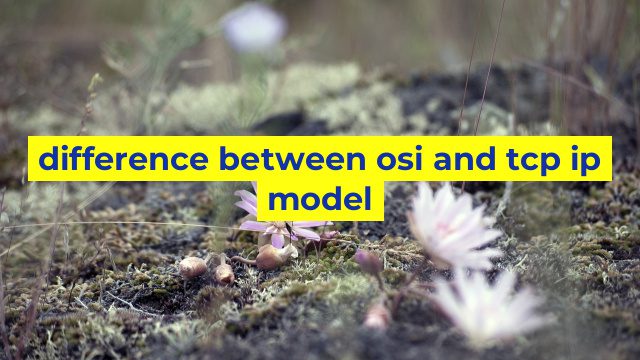Difference Between OSI and TCP/IP Model
Introduction
The OSI (Open Systems Interconnection) and TCP/IP (Transmission Control Protocol/Internet Protocol) models are two widely used models for the communication protocol stack. Despite sharing similar characteristics, they differ in terms of functionality, scope, and layering.
The OSI Model
The OSI model contains seven layers, each of which is responsible for a specific aspect of communication. The seven layers are as follows:
- Physical layer
- Data link layer
- Network layer
- Transport layer
- Session layer
- Presentation layer
- Application layer
Each layer provides a unique set of services and operates independently.
The TCP/IP Model
The TCP/IP model, on the other hand, consists of four layers:
- Network Interface layer
- Internet layer
- Transport layer
- Application layer
The TCP/IP model combines the presentation and session layers into a single application layer.
Differences
The main differences between the two models can be summarized as follows:
- Scope: The OSI model is more generic and can be applied to any type of communication, while the TCP/IP model was designed specifically for the internet and related technologies.
- Layering: The OSI model has seven layers, while the TCP/IP model has four layers.
- Service: The OSI model provides a more detailed set of services, while the TCP/IP model focuses more on speed and efficiency.
Conclusion
Both models have their advantages and disadvantages. The OSI model provides a better theoretical framework and is more versatile, while the TCP/IP model is more efficient and is designed for the specific requirements of the internet. In general, the OSI model is more suitable for academic research and understanding, while the TCP/IP model is more widely used in practice.
Table difference between osi and tcp ip model
| OSI Model | TCP/IP Model |
|---|---|
| Has 7 Layers | Has 4 Layers |
| Physical Layer | Network Access Layer |
| Data Link Layer | Internet Layer |
| Network Layer | Transport Layer |
| Transport Layer | Application Layer |
| Session Layer | |
| Presentation Layer | |
| Application Layer |

